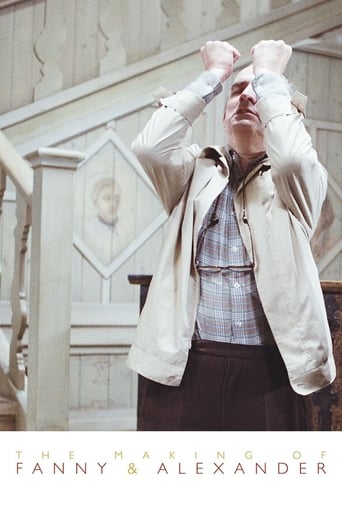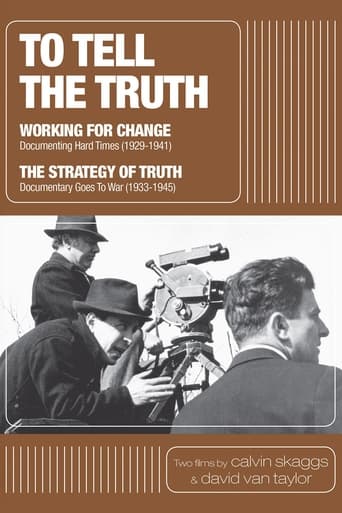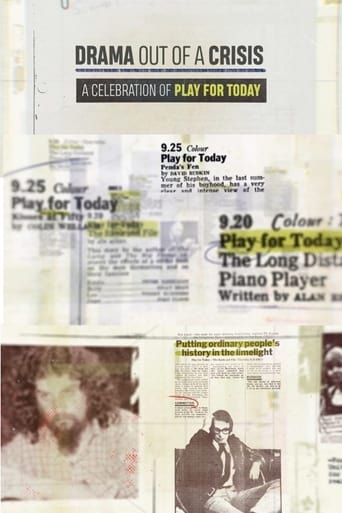Carlos Martinez Escalona
This is a film about a film. About, perhaps, the most outstanding film ever made. Bergman exudes his directorial artistry not being completely aware of it. He is at work, doing his thing, perfectly concentrated on the film this film is about.The camera doing the second work -that is, Bergman's work, is unobtrusive, delicate and tells a completely different story. That may be the strongest point of all this. This film tells the story of how Bergman made the film of his life, his masterpiece. It's not technical. It's not flashy, nor spectacular. It's just the real story of how things worked throughout this extremely complicated and dark story: Bergman's life seen through the eyes of Alexander.Here we find how Ingmar directed his actors. How he related to his friend and lifelong Director of Photography, Sven Nyvqyst. How he could leave things to others with complete confidence on their competence. How Nyvqyst used lighting, and howdecisions were made through the completion of a huge, long and demanding film.If you are a film fan, even if you don't know Bergman, you'll find out why European cinema is much more elaborate in its story telling than the typical American film. This is not a director who wants to be on Time's cover. This is the story of how one man who loved theatre as well as film, who was himself an actor, who understood the deep emotions he wanted the audience to submerge in, did a work of art over, maybe, any other in the history of film making. I know this may sound quite cliche. If you can, try to find the five-hour DVD edition of the film, and then watch this one. You will never forget the experience.One thing must be clear: if you are the "American Dream" kind of film fan, forget about even trying to feel comfortable with Bergman's films. They are overtly awkward compared with the straightforwardness of the typical american storytelling.If you want more on Bergman, find his interview with a Swedish TV interviewer, talking about life, death and love. A one-hour feast, packed with the Criterion Collection's edition of Cries & Whispers. Worth every penny, too.
Alice Liddel
Most 'The Making of...' documentaries are barely concealed extensions of the publicity machine, a glorified advertisement that purports to demystify the industrial production of cinema, to bring the audiences closer to actors and directors who are presumed to be engaged as real people creating a fiction, rather than a fiction. When really, the carefully stage-managed featurette reveals just as much as the filmmakers want, tantalising the curious punter without ever enlightening, and developing an extra facet of a star persona, rather than normalising it.As you might expect, a 'Making of' an Ingmar Bergman film is a little different. Recording the shoot of his swansong and crowning masterpiece, 'Fanny and Alexander', 'Dokument' is essential viewing for Bergmanophiles. Framed by explanatory, often flippant intertitles, the film follows, in detail, Bergman at work, painstakingly, methodically, often tediously shaping each scene, the precise movements of camera and actors, the details of the composition, the timing and delivery of dialogue. There is no frivolous chumminess here, no meet-the-backroom-boys boffinry.
Bergman disclaims at the start any pretensions for this documentary, suggesting that it can never capture the inner journey that is the act of creation: this is of course true, but 'Dokument' is more than the entertaining peek backstage Bergman affects to offer us. With 'Dokument', Bergman performs two very serious functions. Firstly, and perhaps most importantly, he educates the viewer. It many seem dull to watch take after take of each scene, with little of the 'hilarious' bloopers TV programmes and Hollywood end credits delight in (although there's some wonderful business with an intransigent cat). There may not seem to be any real difference between takes, or any reason why we should be shown rehearsals for takes followed by takes. What this repetition does, though, is accustom the viewer to nuance, to the aesthetic reason for the most functional set-up, or why a character is in this particular position, why this shot is in close up, while the next is an elaborate long take. it alerts us to the use of colour, light, framing; it makes us aware of the details of the decor. The documentary may not show the creative inner journey, but when we see the process from rehearsal to take to final act, we do glimpse something of Bergman's art, something that is clearly going on in his head while the shoot takes place, but remains, until then, unspoken. Trust me, if you watch this documentary just before the film itself, as I did, your mind becomes more receptive, and the work's rich magic becomes even more clearly apparent.Secondly, and relatedly, 'Dokument' is in a sense a Bergman film. Despite its light, seemingly loose form and tone (Bergman, far from being the anguished dictator of legend, is amiable and constantly braying with childlike laughter), the creative journey I spoke of becomes in a sense a spiritual journey. Like 'Fanny and Alexander' itself, a recreation of Bergman's childhood, the documentary is framed around dinners - in between comes a revelation of the artist, in this case at the end, rather than beginning, of his career. There is a truly painful sequence here, among the most emotionally powerful in Bergman's work, where Bergman rehearses a cameo with his long-time collaborator Gunnar Bjornstrand, doing a piece as the clown Feste in Shakespeare's 'Twelfth Night'. If the intertitles didn't suggest that Bjornstrand approved the scenes being shown, you would think they were exploitative and humiliating. Bergman may be near the end of his career here, but he is still intellectually and physically formidable, handling the demands of a big-budget, three hours plus costume drama with a large cast and difficult narrative strands with ease and grace. Bjornstrand, on the other hand, seems nearly senile, tired, forgetful, plainly not up to the job, shown in his scene's non-appearance in the movie. The sight of Bergman trying to keep his friend's spirits up, encourage and compliment a giant of acting like he's a baby, for around 20 minutes, is something you'll never see in 'The Making of Pearl Harbour'. It says so much about Bergman's art and his themes, and how even at his most artificial, he was clearly, obstinately true to life. It's uncanny.




